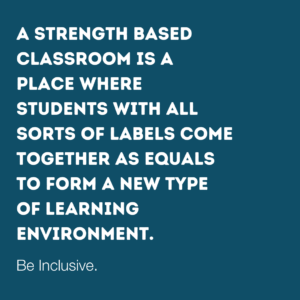Savannah, a current Possip reporter and former educator, discusses finding ways for teachers and parents to help their students and children navigate through a complex world.
Why it’s important to think about how to help students navigate a complex world?
The world our students are currently living in may feel very different from the one we grew up in. Over the last few years, students have had to navigate school in the greater context of a global pandemic. Additionally, students have access to handheld computers. Our world is becoming more digital. Endless amounts of information is available at their fingertips in a way many of us did not have access to.
And yet, much of the education system remains the same despite our quickly changing world. Simultaneously, our curriculum is both evolving to mirror the identities and needs of our students – and in social and political battles making it hard to visit the history – or future. Digital learning and technology is increasingly incorporated into everyday learning at all levels.
While it might not always feel like it, the reality is that we each have something to contribute.
Students are living in a world that adults have not experienced. At the same time, we’ve lived before and some of what we have learned and seen helps us help them. So we should lean into our distinct expertise. Here are a few tips and ideas to help students navigate a complex world.
Be Patient
The urgency of inputs from the media pushes students to think they should be able to instantly solve problems. When students open their phones, tablets, and computers, they are inundated with overt and subconscious messaging. When they have a question, Google, Siri, or Alexa can answer it almost instantly.
This is unique to their generation. In the past, nothing was instantaneous. You had to wait for food, weight loss, even phone calls. So we knew that change took a while. Now, because so much can happen so quickly, we may think change happens just as quickly. As we’re increasingly reminded, that’s just not true.
This begs the question, how do we teach our students to be patient and persevere?
We model it, provide historical examples, and experience it with them.
It’s Okay to be Selifsh-ish.
Again thanks to social media we have an upfront view to everyone’s pain and needs. That can be overwhelming and it can feel selfish to focus on where you are and what you need. But as an emerging adult, figuring out your own life, needs and wants can be hard enough. It’s okay to ignore the needs and wants of the thousands of people you now have access to thanks to social media.
Practice this with students by creating intentional weekly space for their wants and needs through a community circle or weekly check-in.
Simplify and Focus
Once again, due to the pace and connectivity of the world, we have a TON of inputs. They come through text, social media, our phones, or computers. It’s overwhelming. We need to simplify and focus. Ask yourself: What matters most to me and my family? What steps do I need to take to achieve my ideal goals?
In Glennon Doyle’s podcast, We Can Do Hard Things, she says, “once the clamor of consensus is gone, you can come to your senses.” When we are so used to polling our community for advice and are overly bombarded by messages, it can feel overwhelming. We need to actively teach our students to drop into our bodies.
Model, Share, and Empathize
By modeling digital citizenship and self-care for our students, this is something we can practice together. Here is an example I often shared with my high school students in an attempt to empathize with their experience:
When I was in college, I would spend hours in the library losing myself in a book. But now, it’s difficult for me to get through a chapter without thinking about opening my phone or computer. Social media wasn’t introduced into my world until later in college. I cannot imagine how difficult it is for our students to create their own boundaries related to technology, social media, and connection.
This also makes me think about one student in particular. He was in my AP Literature class during the time, but I had taught him for multiple years. One day during a passing period he wandered into my classroom and asked for advice. He shared that after school, he found himself watching YouTube for hours on end. This student was unable to concentrate on school work. He didn’t know how to stop.
We must acknowledge the world our students live in and empathize with their experiences in order to help them navigate the complexities of it.
Tools for Navigating a Complex World
Now that we’ve clarified the importance of navigating a complex world, here are a few tools to consider using with students:
- Teach critical thinking and foster curiosity within students, and create opportunities for students to use practiced skills to grapple with everyday complexities.
- Create opportunities to share meaningfully in community with one another.
- Create a digital board, like a Padlet for example, where students can share interesting articles, photos, or posts that feel relevant. Take 15 minutes a week to process it together.
- Model and practice self-care with students through mindfulness, breathing exercises, or meditation.
- Give your child or students- and their parents or teachers – tactical tools and ideas for living in a digital world. Here is one example from Healthy Children.
It can feel difficult to navigate a complex world, even for ourselves! As educators, leaders, parents, and community members, we must practice this with our students too. Remember, we all have something to contribute!
The post How to Help Students Navigate a Complex World appeared first on Possip | Parent Engagement Platform | School Feedback App.
 School Schedule
School Schedule
